LED semiconductor lighting network news friends who have seen science fiction films, must not forget the laser weapons in Star Wars! The Jedi Knights armed with a light sword and a wave of power, any hard metal will be interrupted. In the film Resident Evil, the network of laser beams came to the special forces, I saw a person who was instantly cut into pieces. Row, it sounds a bit disgusting, what is laser? Is the laser really so amazing?
Form a "laser" and complete two important steps first
"Laser" is the abbreviation of "Light Amplification by Stimulated Emission of Radiation", which means "using excitation radiation to increase the intensity of light". The so-called "excitation radiation" is actually completing two important steps, the first one. It is "Pumping" and the second is "Resonance":
Energy stimulation (Pumping)
Solid-state lasers (mostly using photoexcited light) belong to "atomic luminescence". The principle of atomic luminescence has been introduced earlier. The applied energy (light energy or electric energy) excites the atoms of the doping atoms from the inner level to the outer level. When the electrons jump back to the inner energy level from the outer energy level, the energy is released in the form of light energy, as shown in Figure 2(a). Semiconductor lasers (mostly using electro-excitation light) are "semiconductor luminescence". The principle of semiconductor luminescence has been introduced in the past: the application of energy (light energy or electric energy) to excite the semiconductor electrons from the valence band to the conduction band, when the electrons are When the conduction band jumps back to the valence band, the energy is released in the form of light energy, as shown in Figure 2(b).
In order to emit laser light, stimulated radiation is the most basic condition. As shown in Figure 2(c), energy excitation has two modes: "light-excited light (PL)" or "electrically-excited light (EL)", regardless of which one is used. All kinds of methods can produce laser light. Photoexcitation light (PL) is applied light to make electrons jump. Electroluminescence (EL) is applied energy to make electrons jump, which will be described in detail later.
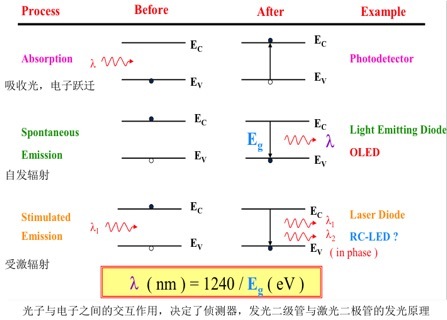
Figure 2 Principle of energy excitation
Resonance amplification
Add a pair of "cavity" to the illuminating area. The resonant cavity can actually be composed of a pair of mirrors. As shown in Figure 3, the beam is reflected back and forth between the left and right mirrors, and the light is continuously absorbed through the illuminating area. Yes, the resonance effect is finally generated, and the energy of the light is amplified.
Photoluminescence (PL: Photoluminescence)? We use Ti Sapphire laser as an example. Firstly, titanium sapphire crystal is obtained by doping titanium atoms into sapphire, and many high-brightness light sources are placed around the crystal. The wavelength of light is directed at the crystal. When the crystal absorbs light energy to produce "energy pumping," another wavelength (color) of light is emitted. The emitted light is reflected back and forth by the two mirrors on the left and right to produce "Resonance". Since the mirror on the right can penetrate 5% of the light, the high-energy laser will be transmitted through the right side. As shown in Figure 3 (a).
Electroluminescence (EL: Electroluminescence) We take "GaAs laser diode" as an example. First, each layer of metal electrode is vapor-deposited on the gallium arsenide laser diode chip (about one grain of sand). Applying a voltage to the chip, when the chip absorbs electrical energy to produce "energy pumping," it emits light of a certain wavelength (color). The emitted light is reflected back and forth by the left and right crystal mirrors to produce "Resonance". Since the mirror on the right can penetrate 5% of the light, the high-energy laser beam will be worn by the right. Transmitted, as shown in Figure 3 (b).

Figure 3 Principle of laser generation
Which laser has the most profound impact on our lives?
The types of lasers can be divided into: gas lasers, liquid lasers, solid lasers, and semiconductor lasers. Strictly speaking, semiconductor lasers are also a kind of solid-state lasers, but due to the large amount of commercial semiconductor lasers currently used, for example, optical reading. Head, optical communication light source, laser pointer, etc., so the laser has deeply affected our lives, and laser diodes can be divided into edge-emitting lasers and surface-emitting lasers. This time participate in 2017 VCSELs (face-emitting lasers) The theme of the Innovation Technology and Application Seminar is the surface-emitting laser. Before entering the theme, I still resume my style, speaking in a popular language!
Laser Diode (LD: Laser Diode)
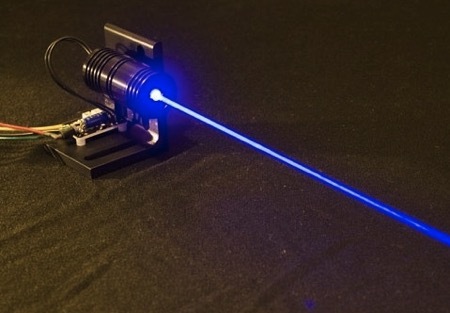
1, the definition of laser diode
The four lasers described above, only the semiconductor laser has the smallest volume and the lowest cost, and can be used only with a small battery, so it can be widely used in various electronic products.
2, the type of laser diode
The structure of the laser diode (LD) is shown in Figure 4 (a). The appearance is cylindrical. It usually has different shapes depending on the package. However, the actual light-emitting part is only "Die". The size of the chip. Similar to a sand on the beach, such a small chip can emit a strong light. Because the laser diode chip is very small, a two-inch GaAs wafer can make thousands of chips, after cutting The package is formed as shown in Figure 4(b). The process of the laser diode is similar to that of the silicon wafer, and is produced by using yellow lithography, doping technology, etching technology, and film growth.
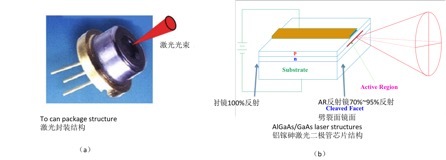
The appearance and structure of the four-beam laser diode LD
There are many applications for laser diodes. I said in the first article in August last year that the article has introduced the use of laser display and illumination, and analyzed the prospects of these two uses, especially after the success of GaN green laser. The prospect of laser TV and laser projection. The application of laser lighting also introduces the future of lasers used in automotive lighting. (Title: Will laser be the protagonist of the next generation of lighting and display?) Today these two applications have also been promoted by Professor Nobuyuki Nakamura of the Nobel Prize in Physics. I believe that everyone has a more general understanding.
Today, I will put the theme in the introduction of the surface-emitting laser VCSEL with similar principle and process to LED . Maybe everyone will be stranger, but knowing this technology and its application prospects will be great for people engaged in the optoelectronic industry. Help, of course, after I participated in the 2017 VCSELs (Face Laser) Innovation Technology and Application Seminar in Taiwan, I promised to bring some dry goods to the readers in my WeChat circle of friends. Now I will share and share this new laser technology. With its future unlimited prospects!
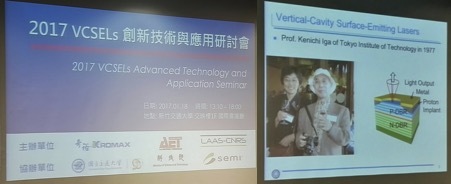
(Professor Kenichi Iga is the first proponent of VCSEL)
What is the optical communication industry that was originally applied by the surface-emitting laser?
Since the first application of the surface-emitting laser VCSEL was in the optical communication industry, of course, the optical communication industry should first be introduced.
First of all, I will introduce you to the Optocommunication industry. Laser is one of the protagonists of optical communication. In fact, optical communication is a very large industry. The optical communication industry can be divided into "active components of light" and "light". The two components of the passive component, the active components are more complex, the passive components are relatively simple, but some passive components still have their complexity, if there is no certain technical ability can not be mass production, we simply explain the following:
Active component of light
The active component of light refers to "the component responsible for the generation and reception of optical signals, which is related to the conversion of photoelectric energy." The generation of optical signals usually refers to the conversion of electrical energy into light energy; the reception of optical signals usually refers to the conversion of optical energy into electrical energy. . Since the processing and operation of general data uses computers, the computer uses electrical signals to process data. Therefore, when we want to transmit data to the optical network, we must first convert the electrical signals into optical signals, as shown in Figure 5. The function of the transmitter "Transmitter" is to convert the electrical signal into an optical signal. We can imagine that it converts the "0" and "1" of the electrical signal into the "dark" and "light" of the optical signal. After the optical signal has passed hundreds of kilometers of transmission in the optical fiber, it reaches the receiving end. At this time, the optical signal must be converted into an electrical signal. As shown in Figure 5, the receiving end is called the "receiver" function. It is to convert the optical signal into a telecommunication signal. We can imagine that it converts the "dark" and "bright" of the optical signal into the "0" and "1" of the electrical signal, and then hands it to the computer for processing and calculation. This is The basic principles of working with fiber optic networks and computers.
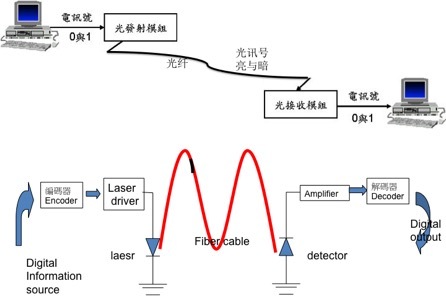
Figure 5. The basic principle of fiber network and computer work
The active components of light include the following, the theme of this is laser diodes, and other components will be introduced in detail in the future:
Laser diode (LD): converts electrical signals into optical signals.
Optical amplifier (Amplifier): Amplifies the optical signal.
Detector: Converts optical signals into electrical signals.
Passive component of light
The passive component of light refers to the "component responsible for the transmission and modulation of optical signals, independent of the conversion of photoelectric energy." The passive components of light include the following types, and I will open a detailed introduction in the future:
Fiber: transmitting optical signals
Connector: Connect the fiber.
Coupler: A two-channel optical signal is combined into one channel.
Splitter: Splits a channel of optical signals into two channels.
Isolator: Blocks the reflection of optical signals.
Attenuator: Reduces the intensity of the optical signal.
Optical switch: Change the direction in which the optical signal advances.
Modulator: Modulated optical signal.
Wavelength Division Multiplexing (WDM): Lights of different wavelengths (different colors) are simultaneously sent into one optical fiber for transmission.
Primary Wavelength Multitasking (CWDM: Coarse WDM): Lights of up to 8 wavelengths (colors) are simultaneously sent to one fiber for transmission.
High-density wavelength multiplexer (DWDM: Dense WDM): More than 16 wavelengths (colors) of light are simultaneously transmitted into one fiber, including thin film filters, arrayed waveguide gratings, and fiber gratings.
What are the special processes of surface-emitting lasers that differ greatly from LEDs ?
Back to the topic, now I will introduce laser diodes, laser diodes are classified by wavelength, and there will be great differences in application. At present, most of visible light lasers are used in light storage and illumination, and most of infrared light is used in optical communication and light. Induction, why does optical communication mostly use infrared lasers? As shown in Figure 6(a), the attenuation of the fiber in the infrared band is the smallest, especially in the 1550nm band, while the attenuation in the 1310nm band is not as small as 1550nm, but because the dispersion is the smallest in this band, as shown in Figure 6(b), 1310nm Wavelength lasers are also commonly used for medium to long distance fiber optic communication sources. Infrared 850nm and 980nm light sources are also used in short-end end network systems. Because of the large amount and low requirements, infrared LEDs are often used instead of lasers.
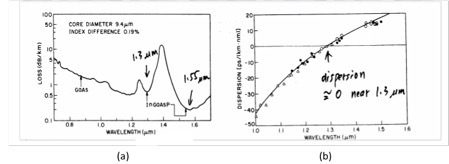
Figure 6. Attenuation and dispersion diagram of silicon-based fiber (SiO2) in different emission spectra
Definition of dispersion: After the optical pulse signal of the input end of the optical fiber is transmitted over a long distance, at the output end of the optical fiber, the optical pulse waveform is broadened in the time domain, and this phenomenon is dispersion.
As broadband and big data systems require more and more data transmission, as shown in Figure 7, optical communication components can be classified into LEDs, edge-emitting and surface-emitting laser diodes LD, Figure 7 is three The structure and principle of the seed device, in addition to the LED of Figure 7 (a) can be used for illumination and display, infrared LED is also an optical communication terminal device commonly used in the early days. The simple manufacturing and the cheaper price than the laser are the advantages of LED.
Figure 7 (c) is a structural diagram of a VCSEL, which is an abbreviation of Vertical-Cavity Surface-Emitting Laser, which is a semiconductor laser whose illumination is perpendicular to the top surface, compared with a VCSEL chip. The edge-emitting laser diode has a relatively simple process. As shown in Fig. 7(b), the VCSEL is different from the edge-emitting laser diode in which the laser is emitted from the edge.
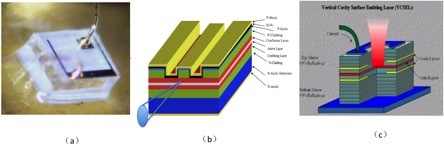
Fig.7 Schematic diagram of three kinds of light-emitting devices of LED, edge-emitting laser LD and surface-emitting laser VCSEL
The surface-emitting laser diode VCSEL is very similar to the LED process, but the two special processes are quite different from the LED. One is the process technology of forming the resonant cavity mirror surface by the DBR reflective layer, and the other is the current limiting oxidation technology.
DBR mirror technology
A typical VCSEL structure is shown in Figure 9. The light-emitting region is composed of multiple quantum wells. The upper and lower sides of the light-emitting region are respectively formed by multiple layers of quarter-wavelength thick and high refractive index alternating epitaxial materials. The refractive index difference makes the reflectance near the Bragg wavelength of each stack extremely high (>99%), and the logarithm of the high reflectivity mirror to be fabricated depends on the refractive index of each pair of layers, typical quantum The number of wells is 1 to 4, which are placed near the maximum of the resonant cavity standing wave pattern to obtain maximum stimulated radiation efficiency for back and forth reflection and oscillation. The outgoing light direction can be the top or the substrate, depending on whether the substrate material is transparent to the emitted lasing light and which value is higher for the upper and lower DBR.
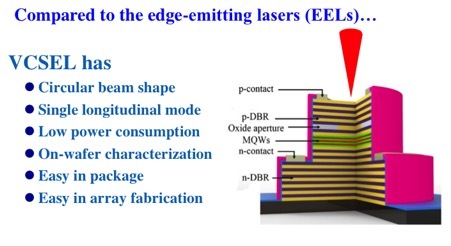
Figure 9 Schematic diagram of VCSEL
Current limiting technology
In order to achieve lower power consumption than LEDs , limiting the current in the VCSEL to achieve a low threshold current can achieve low current and high efficiency of the device.
As shown in Figure 10, there are three main methods to limit the current in the VCSEL, which are classified into three types according to their characteristics: buried tunnel junction VCSEL, ion implanted VCSEL, and oxidized VCSEL.
Figure 10 (a) shows the first structure. The buried tunnel junction VCSEL is complicated in mass production due to its complicated structure and molecular beam epitaxy MBE. It is currently only for academic research. In the early 1990s, electronic communication companies were more inclined to use ion-implanted VCSELs. As shown in Figure 10(b), hydrogen ion H+ is usually implanted into the VCSEL structure. In addition to the resonant cavity, other regions use ion implantation to destroy the lattice structure around the resonant cavity, so that the current is limited. The disadvantage is the light confinement effect. not good. So after the mid-1990s, these companies have used the technology of oxidized VCSEL. As shown in Figure 10(c), the oxidized VCSEL uses the oxidation reaction of the material around the VCSEL resonator to limit the current. Therefore, in the oxidized VCSEL, the path of the current is limited by the oxidizing resonator.
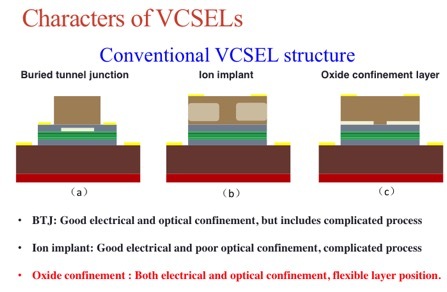
Figure 13 shows three different techniques and structures for limiting VCSEL current
At present, most of the mainstream technologies in the industry have been transferred to oxidized VCSEL structural devices, but production difficulties have also arisen. The oxidation rate of AlAs aluminum arsenide to Al2O3 oxide layer has a very large relationship with the aluminum content. As long as the aluminum content changes slightly, the oxidation rate will change and the specification of the cavity will be too large or too small.
However, this difficulty has been very exciting news in this forum. France's AET Technology has designed a device that can precisely control the oxidation rate. It is suitable for mass production of six-inch chips. The precise control of the oxidation process can save the engineers of the past. Using trial and error correction to debug parameters has made VCSEL a milestone in mass production yields.
Why is the face-emitting laser business machine unlimited?
Since the VCSEL is a semiconductor laser that emits light from a direction perpendicular to the surface of the semiconductor substrate, it has a good mode, low gate current, good stability, long life, high modulation rate, high integration, small divergence angle, and high coupling efficiency. There are many advantages such as cheap prices. Because multiple lasers can be arranged in parallel in the direction perpendicular to the substrate, it is well suited for applications such as parallel optical transmission and parallel optical interconnection. VCSELs can be used to transmit data at high speed in fiber-optic networks.
It can transmit a larger amount of data at a faster rate than a conventional cable system. Speeds of 40G per second are the highest speed records in the US today. Due to its small size, this VCSEL device also has high energy efficiency and is 100 times more energy efficient than conventional wires. But at the same time, the accuracy of its transmitted data is also very high.
At present, VCSEL has been successfully applied to single-channel and parallel optical interconnects at an unprecedented speed. With its high performance-price ratio, VCSEL has been widely used in broadband Ethernet and high-speed data communication networks. Therefore, VCSEL is already a big data center. The most important transmission device for interconnection.
In the same way, the future Internet of Things (IOT), Smart House data center transmission (Data Center Comm.) and sensor monitoring, VCSEL will be the protagonist. In the future, HDMI, HD TV, USB 3.1 Type C 10G or higher, and Optical – Modem, which require high-speed transmission, require VCSEL.
Even virtual reality VR, virtual keyboard VCSEL will occupy a place.
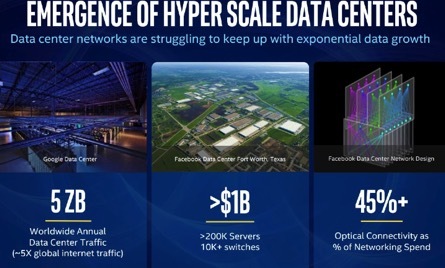
Figure 11 big data center and cloud computing database need a lot of data transmission in the future, here is the big data center of google and face book
Other applications of VCSEL in the future: Sensor and data transmission are the biggest applications of VCSEL. As shown in Table 1, VCSEL has superior performance compared with LED. Take our common mobile phone as an example, because of the proximity sensor in smart phone, when you When the phone face is close to the screen, the screen light will go out and the screen will be automatically locked to prevent the face from being mishandled. When your face is away, the screen light will automatically turn on and automatically unlock. A large number of LED proximity sensors are used in smartphones to turn off the screen when the phone is close to the cheeks to avoid misuse. If we use the VCSEL laser sensor, we can make a mobile phone proximity sensor with lower power consumption and more accurate distance detection. In the same way, in the future many VCs need facilities and equipment, VCSEL will definitely be the best choice.
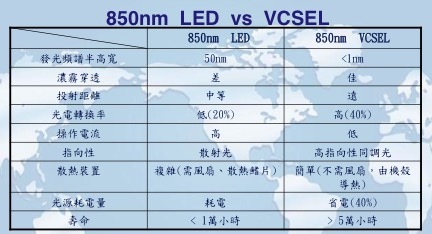
Table 1 Comparison of performance and characteristics of 850nm LED and VCSEL
In the future, if the cost performance of VCSEL is close to LED and the superior performance of VCSEL, the following products will be the world of VCSEL in the future.
3C products: Proximity Sensor (PS), Gesture, 3D Camera, Laser Auto Focus (TOF), Wireless Headset, Iris Recognition (Face Recognition).
Automated induction: Airdropper landing detection, automatic sweeper, Industrial 4.0 automated sensing, driverless car, robot.
Safety protection: elevator safety device, eye protection device, night monitor, car night vision function.
Optical touch panel: ATM, teaching, medium and large panels.
Imagine the future of robotics, where all robots require a large number of sensors, and flexible robots require faster, lower-power sensors. VCSELs will play a very important role in the future robot era.
What is the impact of the latest breakthrough of the Blu-ray GaN VCSEL at Jiaotong University on the surface-emitting laser?
During the meeting, I discussed with the professor of Hsinchu Jiaotong University the application of the world's first blue-light VCSEL developed by their laboratory in the future. As shown in Figure 12, the initial technological breakthrough of GaN-blue VCSEL is indeed gratifying, but It is really difficult to manufacture blue-light VCSELs. Although blue-ray VCSELs can be matched with plastic materials, the cost of optical fibers can be greatly reduced. Especially in the future, big data centers require a large number of optical connections. If the blue-ray VCSELs can break through in terms of process and cost, the prospects can be improved. period.
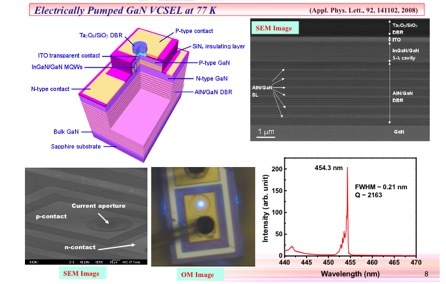
Figure 12 Blu-ray VCSEL structure and data graph of Jiaotong University
At present, Jiaotong University has not used complex epitaxial processes to grow aluminum nitride/GaN gallium DBR structures to fabricate blue VCSELs. Their lab team changed their minds to use a stripped-substrate gallium nitride film structure to nitride by wafer bonding technology. Gallium film-bonded oxide DBR, the new Blu-ray VCSEL has achieved a key breakthrough in terms of light efficiency or manufacturing cost and yield control. Blu-ray VCSELs are matched with plastic optical fibers. This prospect is worth looking forward to, especially in our presence. The era of big data cloud computing in the Internet of Things.
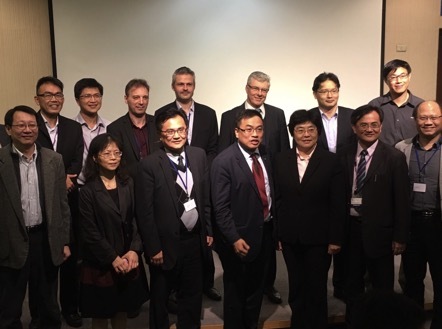
(I am attending the 2017 VCSELs (Surface Laser) Innovation Technology and Application Seminar in Taiwan)
LED is already a very mature industry. Laser LD and VCSEL applications are taking off. For the future, we need new thinking and new technologies to meet the new era of optoelectronics. I hope this article can let LED technology practitioners change your mind and create It belongs to your glorious era.
Hp Laptop 17-By 17-Ca,Hp Laptop Housings,Hp 17 Lcd Back Cover,Hp Back Cover
S-yuan Electronic Technology Limited , https://www.laptoppalmrest.com